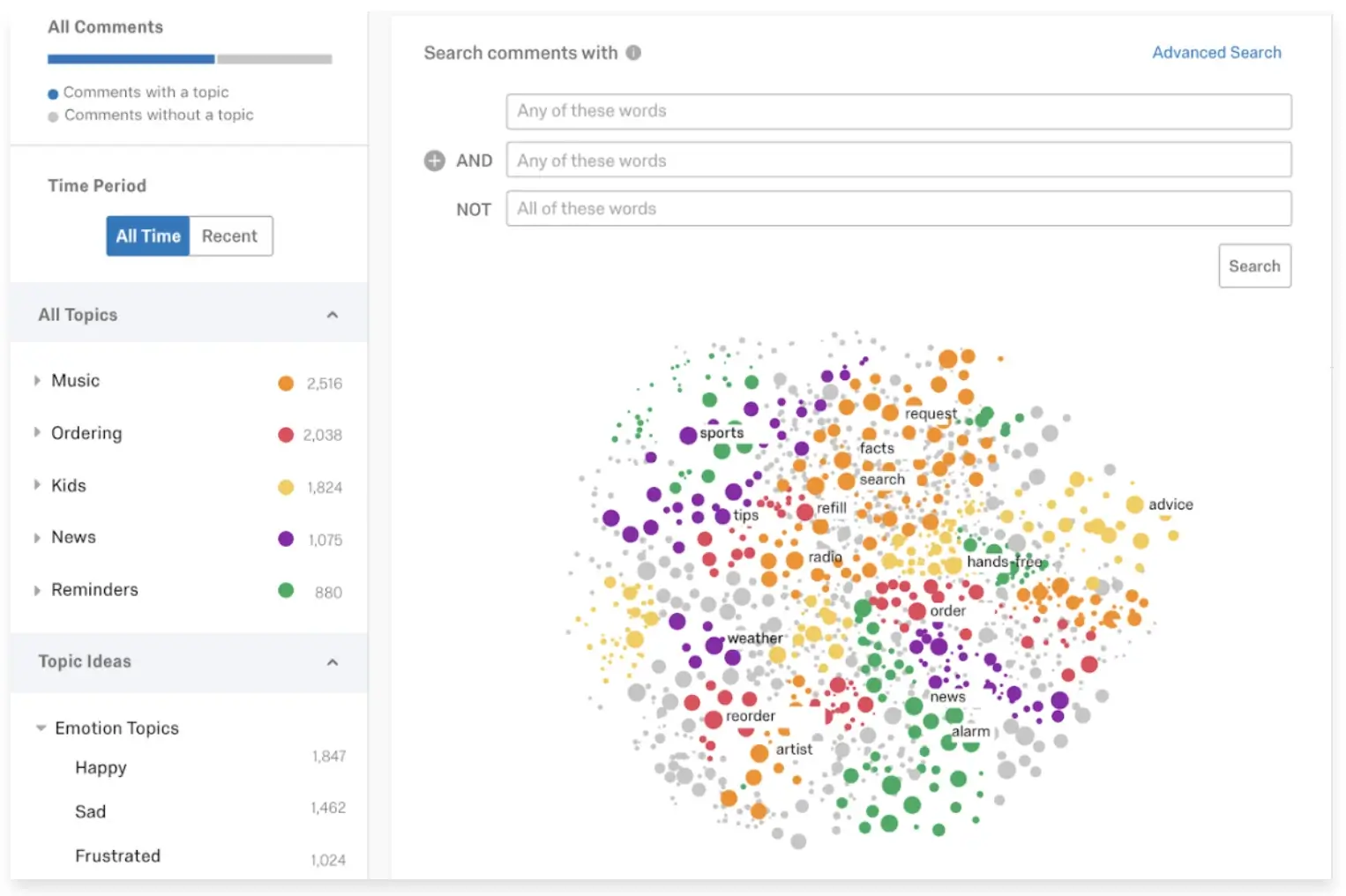Ethnographic research definition
Ethnographic research, also sometimes called ethnography, is a type of qualitative method that studies people in their normal, everyday environments.
The purpose of an ethnographic study is to understand the subject of the research as part of the wider context in which it exists. This might include looking at people within their communities, organisations, and cultures, and looking at the contexts of use for products and services.
Ethnographic research developed in the field of anthropology, where ethnographic observation helped academics to understand communities in their natural environment and to approach research questions like ‘what is everyday life like for this group of people in this place, at this time?’
Free eBook: This Year’s Global Market Research Trends Report
What makes ethnographic studies different?
There are a wide range of quantitative and qualitative research approaches out there in the worlds of social science and business. Here is what sets the typical ethnographic study apart from the rest.
Thick description
Ethnographic research has the potential to create very rich data – sometimes known as thick description. In social science fields, thick description is human social data that includes subjective opinions and feelings from participants as well as observations about behaviour. Ethnographic research is especially strong in this area.
Natural environment
When doing ethnographic research, the research subjects’ natural environment is preserved as much as possible so that researchers can gain insights from it. The researcher uses ethnographic methods that observe and understand things as they are, trying to avoid disrupting the subject or subjects while maintaining ethical boundaries. Participant observation is a big part of ethnographic studies.
Personal experience
Ethnographic research centres the participants or subjects, rather than the researcher. The data collected in an ethnographic study will be as faithful as possible to the participant’s point of view, with less emphasis on the researcher interpreting their findings through the lens of theoretical perspectives.
Social interactions
The type of data collected during an ethnographic study reflects culture, relationships, social norms and cultural practices among a group, community or organisation. It’s qualitative data, meaning that it helps to explain the ‘why’ rather than just the ‘what’.
Ethnographic research examples
Ethnographic research examples might include:
- A researcher joining a business and shadowing individuals during the work day
- A researcher living and working with a community in an isolated village or tribe
- Researchers observing customers visiting a supermarket and interacting with the employees
- Researchers visiting a business’s customers to see how they use their products in their everyday lives
- A researcher spending time on an online discussion board in order to observe comments and conversations about a person or thing
- Researchers entering a hospital waiting room and observing interactions between patients and staff
How ethnographic research helps businesses
How can a method from the field of anthropology help businesses improve? Because they are both fundamentally all about people.
Know your product
Ethnographic research in business tells you not just what people say about your product, service or experience, but what they actually do with it when left to their own devices. You’re no longer reliant on someone else’s perception or memory – you’re seeing for yourself what really happens.
Know your market
Ethnographic research can give you a much richer and deeper understanding of your target audience and how they perceive your company and its competitors. It can help businesses gather rich data about consumer attitudes, behaviours, habits and everyday lives.
Know your customer
Making observations in a domestic or social setting can help you understand how your brand or product fits into people’s lives, and who your customers really are. You’ll learn what kinds of media they consume, the vocabulary they use, their cultural norms and social interactions. This is valuable information for marketing your products as well as designing and developing them.
Inspire new products and services
Ethnographic research can help you develop new ideas for meeting customer needs, and can even spark inspiration for new products or services as under-reported customer pain points are revealed during the research.
Discover new trends
Ethnographic research, especially ethnographic fieldwork, places you in pole position for learning about the trends emerging among consumers. By spending time talking to and observing research subjects, you’ll be
Avoiding response bias
Ethnographic research can also help you collect authentic information and avoid the response bias inherent in self-report data. Response bias happens when people mistakenly or deliberately introduce bias into their answers during data collection. Problems with self-report data can include:
- Social desirability bias
people adjust their answers according to what they think will be a socially acceptable response. - Misunderstanding of the question
Respondents in an interview or survey are confused by question wording - Personal bias
A participant’s description of a group or community is coloured by their feelings towards other individuals
- Biases due to memory
People may not remember things that have happened in the past, or they may not be able to describe them in sufficient detail. Longer-term memory can also introduce more personal subjectivity as the individual has had more time to ascribe subjective meaning to the remembered events.
Quantitative and digital ethnography
While ethnographic research is primarily a qualitative research method, there is an emerging field of quantitative ethnography which combines traditional ethnographic research methods with statistical analysis and Big Data principles.
This is separate from digital ethnography, or online ethnography, which is ethnographic research that takes place in online spaces. Digital ethnography brings technology like smartphones to traditional ethnographic research, allowing ethnographic fieldwork to take place outside the researcher’s physical location. Video diaries, accompanied shopping trips, online forums and discussion boards and blogging have all been used in digital ethnographic studies.
Ethnographic research methods
There are various ethnographic methods you can use to collect data from participants. The nature of ethnographic research is to observe, so participant observation plays a major role in most ethnographic studies, but it’s not the only way to collect data.
Ethnographic methods include interviews, surveys, participant observation, informal conversation, filming and taking photographs. As well as primary research methods like these, you can use secondary ethnographic methods including document analysis.
Active participant observation
In active ethnographic observation, researchers immerse themselves in the lives of the research participants they are studying, taking part in social interactions with group members and understanding social relationships from the inside out through personal experiences.
This kind of ethnographic work involves significant time and effort on the part of the researcher, not only to develop a deep understanding but to gain access to the group they want to study.
Passive observation
In passive observation, the researchers collect data while observing from the sidelines. They will take thorough notes with a detailed description of what is happening, but they won’t intervene in the social interactions they see.
Passive observation allows researchers to concentrate on capturing a detailed account of the study subjects through thorough note-taking. However, it may be more difficult to gain a truly deep understanding of social interaction than with active ethnographic fieldwork.
Archival research
Archival research in ethnography means looking through archived material with an ethnographic mindset. When carrying out archival research, the researcher will look through public records, historical sources and other archived material with the aim of understanding the social context and cultural environment in which past events occurred. This may be done as a stand-alone ethnographic study, or as part of a wider project that also involves present-day ethnographic research too.
Avoiding ethical issues
When collecting data via participant observation, film, video or informal conversation, it’s important to obtain consent from participants. Because some ethnographic methods are unobtrusive or indistinguishable from normal everyday behaviour, people may not notice that research is taking place and data is being collected. Make sure you get everyone’s informed consent before you use their data in your research.
Tools for businesses doing ethnographic studies
As a business considering ethnographic research, it’s important to equip yourself with the right tools and services to help make your ethnographic study as efficient and effective as possible.
Video feedback
Being able to collect video feedback from your customers helps you step into their world. It can provide richer data with as much as 6 times more content than traditional open feedback. Asking your customers to record, format and send their video feedback over to you spontaneously is not a realistic ask. But you can make it easier and more appealing by providing them with a frictionless video feedback experience, for example by embedding video feedback capabilities into a survey.
Real-time transcription and AI-powered topic and sentiment analysis can help you to process your ethnographic research video data more easily, helping you itemise and organise the data so you know what you have and where to find it.

Thematic analysis
If you’re carrying out archival ethnographic research, or you’re considering an online ethnographic study with discussion boards and forums as your fieldwork site, you may end up feeling overwhelmed with the quantity of data you need to sift through. AI tools can help you to draw out themes and topics from large bodies of data, cutting down on the time you spend combing through materials, and giving you more time to focus on your research results.

Qualtrics provides powerful qualitative and quantitative research tools that are easy to use and provide quick results in plain language – no need for advanced knowledge or training. It helps make tools like ethnographic research more accessible for business users who want to better connect with their potential customers.
Free eBook: This Year's Global Market Research Trends Report